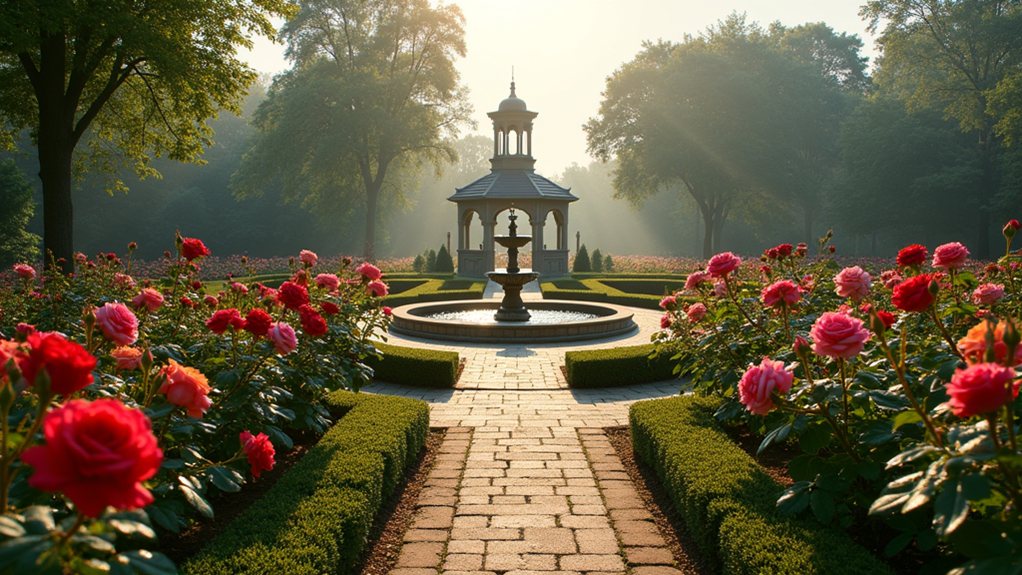Columbus boasts the most spectacular hidden oasis in the entire Midwest, yet thousands of tourists zip past it every day. Rose Park, tucked away in Clintonville since 1952, isn’t just another green space—it’s a living tapestry of over 11,000 rose varieties that perfume the air from spring through fall. The park’s restored gazebo, where local musicians sometimes perform impromptu concerts, serves as the centerpiece of this fragrant retreat. What secrets might the decorative observation tower reveal about the city’s horticultural history?
A Horticultural Treasure Hidden in Plain Sight

A verdant oasis amidst the urban landscape, Rose Park stands as a horticultural jewel situated within Whetstone Park in Columbus, Ohio’s Clintonville neighborhood. This botanical haven, tucked away at 3923 North High Street, welcomes visitors daily from 7 a.m. until dusk, offering an accessible retreat via buses 2 and 102 for those without personal transportation.
Established in 1952 with initial planting occurring the following year, the park has blossomed into a stunning display featuring more than 11,000 rose specimens across 350 varieties. The original designers—Ray Dietz, Eugene Rosebrook, and George Tobey—crafted an Italian-style formal garden that continues to enchant visitors decades later. In 1952, the American Rose Society recognized the garden’s significance by establishing its headquarters there, cementing Columbus’s place in horticultural history.
A meticulously designed Italian-style garden where 11,000 roses bloom across 350 varieties, recognized by the American Rose Society since 1952.
Beyond roses, the park boasts remarkable diversity with its Perennial Garden showcasing over 100 plant species, an Herb Garden with a similar count of aromatic varieties, and an Arboretum featuring 138 tree and shrub varieties. The Columbus Park of Roses officially opened to the public on June 6, 1953 with much fanfare and approximately 20,000 plants. The Heritage Rose Garden, added in 1985, preserves pre-1867 rose varieties that might otherwise be lost to time.
Visitors can explore along bench-lined trails or relax in picnic areas while admiring architectural features like the decorative observation tower added in the 1980s and a central fountain renovated in 2012. The free admission makes this peaceful floral retreat accessible to everyone seeking natural beauty without the crowds of more publicized attractions. Much like Hartland’s rural tranquility in Maine, this garden offers a peaceful escape from the hustle and bustle of city life. The restored 1878 gazebo, installed in 1975 from Fort Hayes, provides a charming backdrop for community events and weddings.
The park’s commitment to community engagement shines through annual concerts hosted by the Civitan Club and its small outdoor theater that brings neighbors together. Local citizens frequently donate park benches and rose bushes, creating a truly communal space that evolves with each passing season.
While Columbus offers many attractions, this hidden gem provides a peaceful retreat where visitors can experience extraordinary botanical diversity and historical significance that most tourists unfortunately miss during their Ohio adventures.






